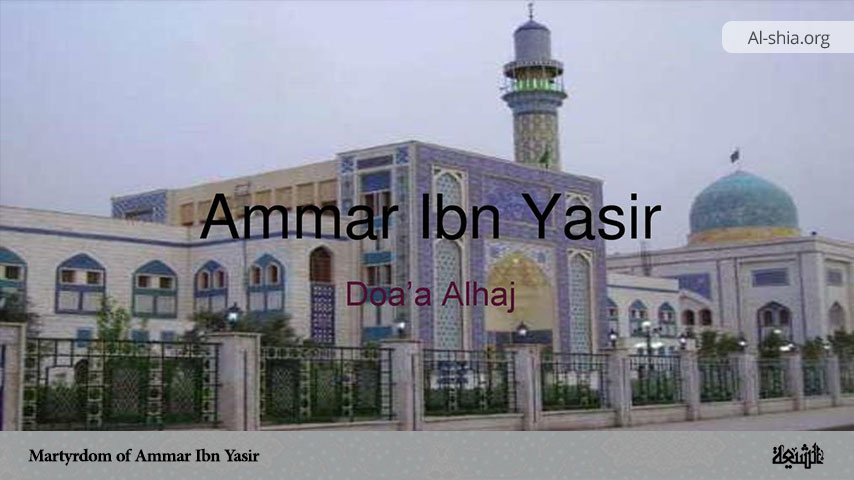The biography of Ahmad ibn Musa Shahchiragh stands as an illuminating chapter in the history of the Prophet Muhammad’s progeny. Revered as the son of Imam Musa al-Kādhim and the brother of Imam ʿAlī Al-Rida, Ahmad ibn Musa Shahchiragh holds a unique place in the religious consciousness of Iranian and Shiʿi communities.
The figure of Ahmad ibn Musa Shahchiragh is closely associated with the spiritual heritage of Iran, particularly through his mausoleum in Shiraz, which has become a revered site of pilgrimage known as Shahchiragh —meaning “King of Light.” His life story, though not as widely documented as those of the Imams, carries immense religious and cultural significance, symbolizing resistance, faith, and the enduring sanctity of the Prophet’s household.
This article seeks to present a structured and analytical account of the life of Ahmad ibn Musa Shahchiragh, drawing from both classical Shiʿi sources and historical accounts. In doing so, the biography contributes to a deeper understanding of the legacy left by the descendants of the Prophet and the sacred his memory in the hearts of believers.
Lineage and Family Background
Ahmad ibn Musa Shahchiragh was a noble descendant of the Prophet Muhammad (peace be upon him and his family), born into one of the most revered lineages in Islamic history. He was the son of Imam Musa al-Kādhim[1], the seventh Imam in the line of Twelve Imams, and his mother was known as Umm Ahmad[2].
The noble lineage of Ahmad ibn Musa Shahchiragh elevated his position among both scholars and laypeople. As a direct descendant of the Prophet and part of the illustrious line of Imams, he commanded respect wherever he went.
Early Life and Upbringing
There is no information at hand on the year of his birth, but it is reported that he was born in Medina. Likewise, details of his early life remain limited in classical sources, what stands out is his strong connection to the Imams of his time and how he was raised in a household dedicated to the Qur’an, worship, and resistance against political injustice.
The early life of Ahmad ibn Musa Shahchiragh unfolded within the noble household of Imam Musa al-Kādhim, a household steeped in knowledge, piety, and resistance to oppression.
From his earliest years, Ahmad ibn Musa Shahchiragh was surrounded by the teachings of the Qur’an, the traditions of the Prophet, and the moral example of the Imams of the Ahl al-Bayt. Born in the sacred city of Medina, he enjoyed the spiritual and intellectual environment that shaped many of the righteous personalities of early Islam.
The early years of Ahmad ibn Musa Shahchiragh not only reflect a model of virtuous Islamic upbringing but also highlight the silent strength of the Ahl al-Bayt in resisting tyranny through character, faith, and steadfastness. His youth set the stage for the sacrifices he would make later in life and explains why his legacy remains alive in the hearts of countless believers to this day.
Noble Status of Ahmad ibn Musa Shahchiragh
Ahmad ibn Musa Shahchiragh is revered for his piety[3], knowledge, wisdom, and generosity. His character is often depicted as compassionate and virtuous, embodying the values of humility and devotion. It is reported that Ahmad ibn Musa Shahchiragh was very generous, and his father, Imam al-Kadhim (PBUH), loved and admired him very much[4].
Al-Kashshi referred to Ahmad ibn Musa Shahchiragh as a knowledgeable person in his time and as a hadith transmitter who transmitted many hadiths from his father and ancestors. He wrote that Ahmad ibn Musa transcribed the whole Qur’an in his handwriting[5].
In addition, Shaykh al-Mufid in his popular book, Al-Irshād referred to Ahmad ibn Musa Shahchiragh as a great figure: “Ahmad ibn Musa was a man of dignity, highly respected, and pious, and was loved by his father and preferred by him over his other children. Imam al-Kadhim (PBUH) gave him his farm, known as ‘Yasira’. Ahmad ibn Musa ibn Ja’far emancipated 1000 slaves[6]“. Shaykh al-Mufid cited a hadith which indicated that his father, Imam al-Kadhim (PBUH), highly regarded Ahmad, never ignored him, and always looked after him[7].
Sayyid Ahmad ibn Musa is commonly known by the title Shahchiragh, which translates to “King of the Light.” This title, however, originates from later stories and is not found in early sources. According to one such story, until the reign of Amir Adud Al-Dawla, the exact location of Ahmad ibn Musa’s burial was unknown. An old woman living nearby noticed a light shining each Thursday night until sunrise. After contemplating the significance of this light, she informed Amir Adud Al-Dawla, who instructed her to notify him whenever the light appeared. When it did, the king visited and sent someone to investigate. The light led them to the mausoleum of Ahmad ibn Musa, and the king subsequently ordered the construction of a magnificent monument at the site. This event is believed to be the origin of the title Shahchiragh, meaning “King of the Light.”[8]
Migration to Iran
The migration of Ahmad ibn Musa Shahchiragh to Iran marks a pivotal chapter in his biography and in the religious history of the region. During the reign of the Abbasid caliphs, especially under the oppressive rule of al-Maʾmūn, many members of the Prophet’s household were subjected to surveillance, harassment, and political exile. It was in this volatile atmosphere that Ahmad ibn Musa Shahchiragh, like many other descendants of the Imams, sought refuge in safer lands. His journey to Iran was not merely an act of physical relocation, but a continuation of the spiritual mission upheld by the Ahl al-Bayt.
Historical sources suggest that Ahmad ibn Musa Shahchiragh moved from Medina to Tus (present-day Mashhad) through Shiraz with a group of his loyal companions whose number according to a report is recorded as between 3000 to 15000 people[9].
According to Sulṭān al-Wāʿiẓīn, Ahmad ibn Musa Shahchiragh migrated to Iran for two main reasons: first, to seek vengeance for the martyrdom of his brother, ʿAlī ibn Mūsā al-Riḍā (PBUH), who was killed by Caliph al-Maʾmūn; and second, to meet his brother in Merv, although he received news of his brother’s martyrdom while still on the way[10].
Martyrdom of Ahmad ibn Musa Shahchiragh
The martyrdom of Ahmad ibn Musa Shahchiragh is one of the most tragic yet spiritually significant events in Shiʿi history. As Ahmad ibn Musa Shahchiragh journeyed toward Khorasan, likely intending to join his brother Imam ʿAlī al-Rida, he passed through the region of Shīrāz, where he was ambushed by the Abbasid forces. The political threat posed by Ahmad ibn Musa Shahchiragh due to his lineage and popularity was enough to warrant a brutal attack, leading to his martyrdom along with several of his companions[11].
After his martyrdom, the body of Ahmad ibn Musa Shahchiragh was buried in Shiraz, where his grave soon became a sacred site for the lovers of the Ahl al-Bayt. Over the centuries, the tomb of Ahmad ibn Musa Shahchiragh evolved into the majestic shrine known today as Shahchiragh, meaning “King of Light.”[12] This shrine remains a symbol of reverence, sacrifice, and spiritual inspiration for pilgrims from across Iran and the Islamic world.
His martyrdom in Shiraz not only immortalized his name but also transformed the city into a center of Shiʿi devotion and resistance against tyranny.
Legacy and Influence of Ahmad ibn Musa Shahchiragh
The legacy of Ahmad ibn Musa Shahchiragh continues to resonate deeply within Shiʿi communities, particularly in Iran. His martyrdom in Shiraz and his connection to the Prophet’s family have made him a symbol of faith, sacrifice, and resistance. The shrine of Ahmad ibn Musa Shahchiragh remains one of the most important pilgrimage sites for millions of Shiʿa Muslims, who visit to honor his memory and seek spiritual blessings.
The influence of Ahmad ibn Musa Shahchiragh extends beyond his martyrdom. His dedication to the Ahl al-Bayt and his steadfastness in the face of political oppression inspire Muslims to maintain their faith, regardless of the challenges they face. His life serves as a reminder of the deep connection between spiritual integrity and social justice, and the ongoing struggle to preserve the true teachings of Islam.
The shrine of Ahmad ibn Musa Shahchiragh in Shiraz has become a beacon of light for followers of the Ahl al-Bayt, cementing his place in Islamic history as a martyr whose influence continues to shape the religious and cultural landscape of Iran and the broader Shiʿi world.
Conclusion
The life and legacy of Ahmad ibn Musa Shahchiragh represent the enduring spirit of the Ahl al-Bayt and their unwavering commitment to justice and piety. From his noble lineage as the son of Imam Musa al-Kādhim to his tragic martyrdom in Shiraz, Ahmad ibn Musa Shahchiragh exemplifies the virtues of sacrifice, resilience, and faith. His life, although cut short by political persecution, left a profound impact on the Shiʿi community, inspiring generations to uphold the values of truth and righteousness.
The shrine of Ahmad ibn Musa Shahchiragh in Shiraz stands as a testament to his lasting influence, drawing millions of pilgrims who seek to honor his memory and receive blessings from his sacred resting place. His legacy serves as a powerful reminder of the sacrifices made by the family of the Prophet Muhammad and their unwavering dedication to preserving the true teachings of Islam.
As we reflect on the life of Ahmad ibn Musa Shahchiragh, we are reminded that his martyrdom was not an end, but a beginning—a catalyst for continued devotion and a symbol of the enduring power of faith in the face of adversity. His story remains an integral part of the Islamic narrative, a beacon for those who seek guidance from the light of the Ahl al-Bayt.
Notes:
[1] . Mufīd, Muḥammad ibn Muḥammad, Kitab al-Irshād, vol. 2, p. 428.
[2] . Majlisī, Muḥammad Bāqir, Biḥār al-Anwār, vol. 48, p. 308.
[3] . Mufīd, Muḥammad ibn Muḥammad, Kitab al-Irshād, vol. 2, p. 428.
[4] . Irbilī, Alī ibn ʿIsā, al-Kashf al-ghumma, vol. 2, p. 226; Ibn Ṣabbāgh, Alī ibn Muḥammad, al-Fuṣūl al-muhimma, vol. 2, p. 961.
[5] . Kashshī, Muḥammad, al-Ikhtīyār maʿrifat al-rijāl, p. 294.
[6] . Mufīd, Muḥammad ibn Muḥammad, Kitab al-Irshād, vol. 2, p. 244.
[7] . Ibid, vol. 2, p. 245.
[8] . Zāhidī, “Aḥmad b. Mūsā”, p. 98.
[9] . Sulṭān al-Wāʿiẓīn, Muḥammad, Shabhā-yi pīshāwar, p. 117.
[10] . Ibid, p. 118.
[11] . Ibid, p. 117.
[12] . Zāhidī, “Aḥmad b. Mūsā”, p. 98.
References
- Ibn Ṣabbāgh, ʿAlī b. Muḥammad. Al-Fuṣūl al-muhimma fī maʿrifat al-aʾimma. Qom: Dār al-Ḥadīth, 1422 AH.
- Irbilī, ʿAlī b. ʿIsā al-. Kashf al-ghumma. Tabriz: Banī Hāshimī, 1381 AH.
- Kashshī, Muḥammad al-. Ikhtīyār maʿrifat al-rijāl. Mashhad: Dānishgāh-i Mashhad, 1348 Sh.
- Majlisī, Muḥammad Baqir ibn Muḥammad Taqi. Biḥār al-Anwār. Second edition. Beirut: Dar Ihya al-Turath al-Arabi, 1403 AH.
- Mufīd, Muḥammad ibn Muḥammad (Shaykh Mufid), Kitab al-Irshād (n.d). Translator: I. K. A. Howard.
- Sulṭān al-wāʿiẓīn, Muḥammad. Shabhā-yi pīshāwar. Thirty ninth edition. Tehran: Dār al-Kutub al-Islāmīyya, 1379 Sh.
- Zāhidī, Sayyid Yāsīn. “Aḥmad b. Mūsā”. Majalla-yi Sukhan-i Tārīkh 5, 1388 Sh.


















